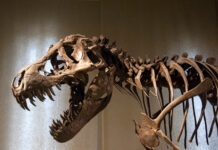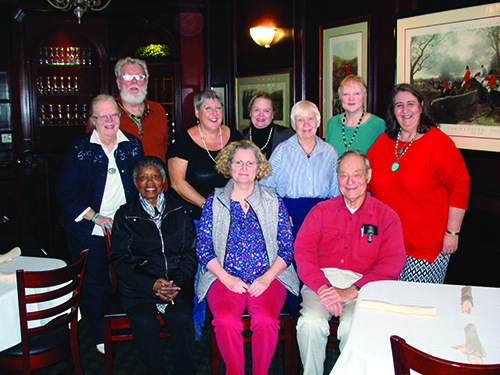
By Helen Serras-Herman
Gemology is the scientific study of natural and artificial gemstones. It is part of the geosciences, a specialized branch of mineralogy. Gemology is an in-depth study, and diplomas are available through gemological associations worldwide instead of universities, which is the case for mineralogy. Completing gemological studies is a long, arduous, and costly undertaking. The institutions offering the certification also provide full courses and short, specialized courses at centers around the globe, online, and during large trade show seminar events.
Limited gemology courses are also offered through online classes and adult education programs. One such shining example is the Potomac Gemology Class, taught in Potomac, Maryland, through the adult education programs of Montgomery County. The class is celebrating its Golden Anniversary in 2021, fifty years of continuous education about the fascinating world of gems. But before we discuss this legendary program, let’s first take a closer look at the study of gemology.
The Study of Gemology
The study of gemology can provide graduates with careers in science and research, mine and gem exploration. Additionally, careers in retail and wholesale aspects of the gem and jewelry trade, lapidary arts, antiques, and art history are also options. Gemology attracts people of various fields, such as college mineralogy students, retail jewelers, and lapidaries and artists. Also, gem enthusiasts who want to deepen their knowledge in gemstone identification often seek out courses.
Gemology students learn the fundamentals of gemstones. This information includes the formation of minerals and gems, crystal systems, physical and optical properties of gemstones and organic gem materials, and identifying them using hand-held gemological equipment. The type of equipment used includes, but is not limited to, a refractometer, polariscope, spectroscope, microscope, optical filters, and the primary tool – the loupe. Students also learn to distinguish between natural and synthetic gemstones and glass imitations.
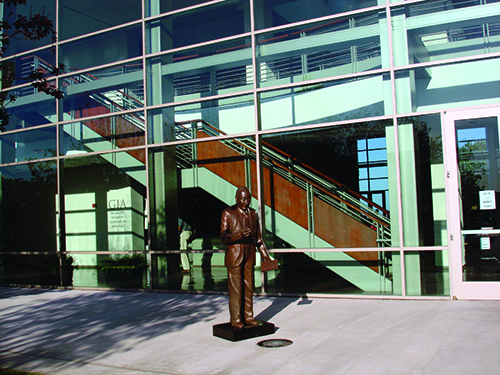
Gemology courses are available through the Gemological Institute of America (GIA) at its base location in Carlsbad, California, and New York campus, and through online programs plus hands-on labs. The GIA is a non-profit organization founded in 1931 (www.gia.edu). The full program – a comprehensive study of diamonds and colored stones – results in the student earning the GIA Graduate Gemologist® degree.
The Gemmological Association of Great Britain (Gem-A) is the world’s longest established provider of gem and jewelry education [gemmology – the English spelling]. Gemology courses were first offered in 1908. Gem-A’s prestigious diplomas on the study of colored stones and diamonds are respected around the world. Classes are held at worldwide centers and online (https://gem-a.com). When I studied and graduated in 1988 and became an FGA (Fellow of the Gemmological Association), we had to memorize, yes learn by heart, all the refractive index and specific gravity numbers, and write an essay about the gemstones in the test, all by memory — not as multiple choice answers.
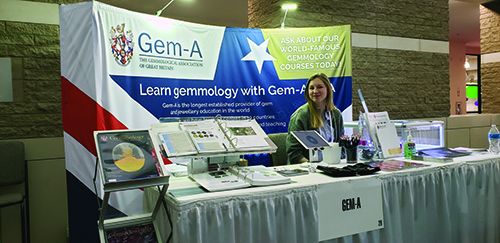
Many countries have gemological associations, including those in Canada, Germany, and Australia, dedicated to research and education. Gemological associations regularly set up information booths during the American Gem Trade Association (AGTA) Tucson GemFair. I encourage you to stop by and receive information about their courses when the show takes place next. Another step in the education process is jewelry appraising, which is a step beyond the gemological degrees and offered through jewelry appraising organizations, such as the National Association of Jewelry Appraisers (NAJA) and the Accredited Gemologists Association (AGA).
The Potomac Gemology Class – Tribute to Three Teachers
The Potomac Gemology Class takes place at the Potomac Community Recreation Center just outside of Washington, D.C. The center is located at 11315 Falls Road, in the heart of beautiful Potomac, an affluent old town in Montgomery County, first settled in 1714. Potomac still holds a rural town atmosphere, with large estates, old mansions, horses, winding roads, and historic buildings. The community center offers a wide range of activities, ranging from education to sports.
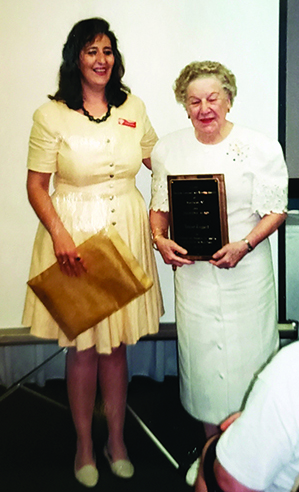
The gemology class taught there is a great introduction to the world of gems. Students learn about the Mohs hardness scale, gemstones’ physical properties, world mining locations, and the lapidary arts. Each week’s curriculum usually pivots around one gemstone, with hands-on specimens and jewelry. The gemology class was first established and taught by Louise Elizabeth Cook Taggart (1900-1998) in 1971. I had the honor to meet Mrs. Taggart when she was in her 90s and still very active. She was a Gem, Lapidary & Mineral Society of Washington, D.C. (GLMS-DC) member and gave lectures at the monthly meetings. I was delighted to present her with the club’s Educational Award during our third annual lecture series in 1995, a special event I organized during the club’s annual gem show while serving as president.
I also visited Mrs. Taggart in the early 1990s at her home in Bethesda, where she showed me her gem collection and shared stories of her world travels. She began teaching the lapidary and gemology class at the Potomac Center after her diplomat husband, Paul Taggart, and she returned from service in Germany. She led that lapidary and gemology class for 27 years until her passing in 1998.
Her class successor was Lisa Carp (1928-2017), another gem and jewelry lover. Neither teacher held a gemology degree, but they were both kind, fascinating, and richly educated people of the world who had collected interesting gems and jewelry from various locations. They both had an amazing gift of sharing their travels and love for gemstones and jewelry with their students by showing specimens and intertwining personal stories that made the class a great success.
Lisa was born in Germany, but her family immigrated to the United States in 1934, ahead of the dangerous political environment. She graduated with a degree in bacteriology. She married and had two daughters and later traveled the world with her husband. I developed a close friendship with Lisa, too. She was always on the lookout for new and unusual gem materials, which she often purchased from us and shared with her students. I learned a lot from both women about making class fun, interesting, and appealing to a broader audience.
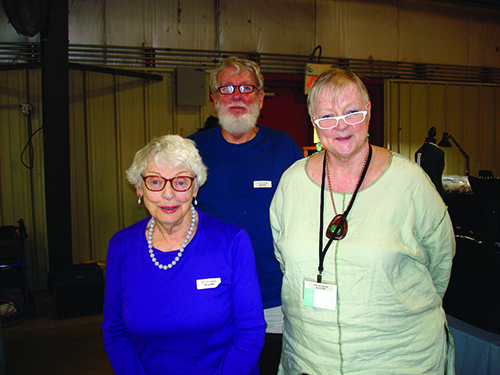
The class’ current instructor is Tim Morgan, who took over the reins from Lisa. Tim holds a Ph.D. in history and taught history at the Christopher Newport University in Virginia from 1971 until he retired in 2005. He is currently a GIA gemology student, an active member of the DC-GIA Alumni, and a dedicated gem and jewelry researcher. Tim served as director for the Washington D.C. Bead Museum for two years (2007- 2008) and as speaker-in-residence for the EFLMS Wildacres Workshop in North Carolina in 2016. He is married to Michelle McMurty, a wonderful jewelry artist and gem lover, always by his side.
Like his predecessors, Tim works tirelessly to enhance the class with new presentations and specimens. Every time I return to Maryland, I share a presentation with the class and hold a show-and-tell at the end. I am amazed that some of the students are part of Mrs. Taggart’s original class! We always conclude our visit with a wonderful crab cake lunch in the Potomac Village, and I’ve been honored and humbled to see people at lunch wearing one of my pieces of lapidary jewelry.
As I write this, the Potomac gemology class is on hiatus due to COVID-19 safety measures, so be sure to call ahead to confirm. Typically, courses are taught during three months and include beginner and advanced classes, each taught once a week, from 10 a.m. to 12:15 p.m.
If you live within the Washington, D.C., metro area, which encompasses Maryland and Virginia, this gemology class is a great learning opportunity. Call the center at 240-777-6840, or check the online schedule.
Author: Helen Serras-Herman
 Helen Serras-Herman, a 2003 National Lapidary Hall of Fame inductee, is an acclaimed gem sculptor and gemologist with over 37 years of experience in unique gem sculpture and jewelry art. Visit her website at www.gemartcenter.com and her business Facebook page at Gem Art Center/Helen Serras-Herman.
Helen Serras-Herman, a 2003 National Lapidary Hall of Fame inductee, is an acclaimed gem sculptor and gemologist with over 37 years of experience in unique gem sculpture and jewelry art. Visit her website at www.gemartcenter.com and her business Facebook page at Gem Art Center/Helen Serras-Herman.
If you enjoyed what you’ve read here we invite you to consider signing up for the FREE Rock & Gem weekly newsletter. Learn more>>>
In addition, we invite you to consider subscribing to Rock & Gem magazine. The cost for a one-year U.S. subscription (12 issues) is $29.95. Learn more >>>




